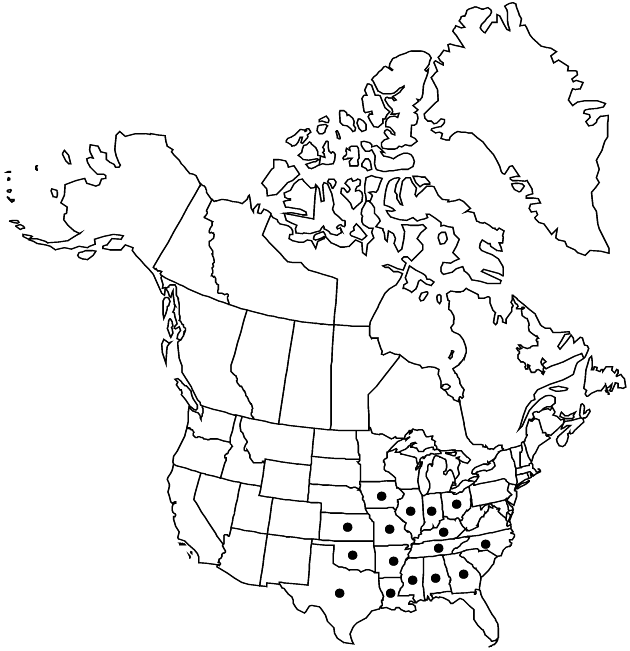Difference between revisions of "Verbesina helianthoides"
Fl. Bor.-Amer. 2: 135. 1803.
FNA>Volume Importer |
FNA>Volume Importer |
(No difference)
| |
Revision as of 18:47, 24 September 2019
Plants 60–120+ cm (perennating bases ± erect or horizontal rhizomes, internodes winged). Leaves all or mostly alternate (proximal sometimes opposite); blades ± lance-ovate to lanceolate, 5–12+ × 2–5+ cm, bases ± cuneate, margins ± toothed, apices acute to attenuate, faces strigose to sericeous. Heads 2–5(–10+) in ± corymbiform arrays. Involucres ± hemispheric, 10–15+ mm diam. Phyllaries 16–21+ in 2–3 series, ± erect, lanceolate, 6–9+ mm. Ray florets 8–13+; laminae 20–25(–30+) mm. Disc florets 40–80+; corollas yellow. Cypselae dark brown to black, oblanceolate to elliptic, 5 mm, faces strigillose to glabrate; pappi 0.5–1.5 mm. 2n = 34.
Phenology: Flowering May–Jul.
Habitat: Moist places in sandy, pine woodlands, post-oak woodlands, disturbed places
Elevation: 70–500 m
Distribution

Ala., Ark., Ga., Ill., Ind., Iowa, Kans., Ky., La., Miss., Mo., N.C., Ohio, Okla., Tenn., Tex.
Discussion
Verbesina helianthoides may be no longer present in Georgia.
Selected References
None.